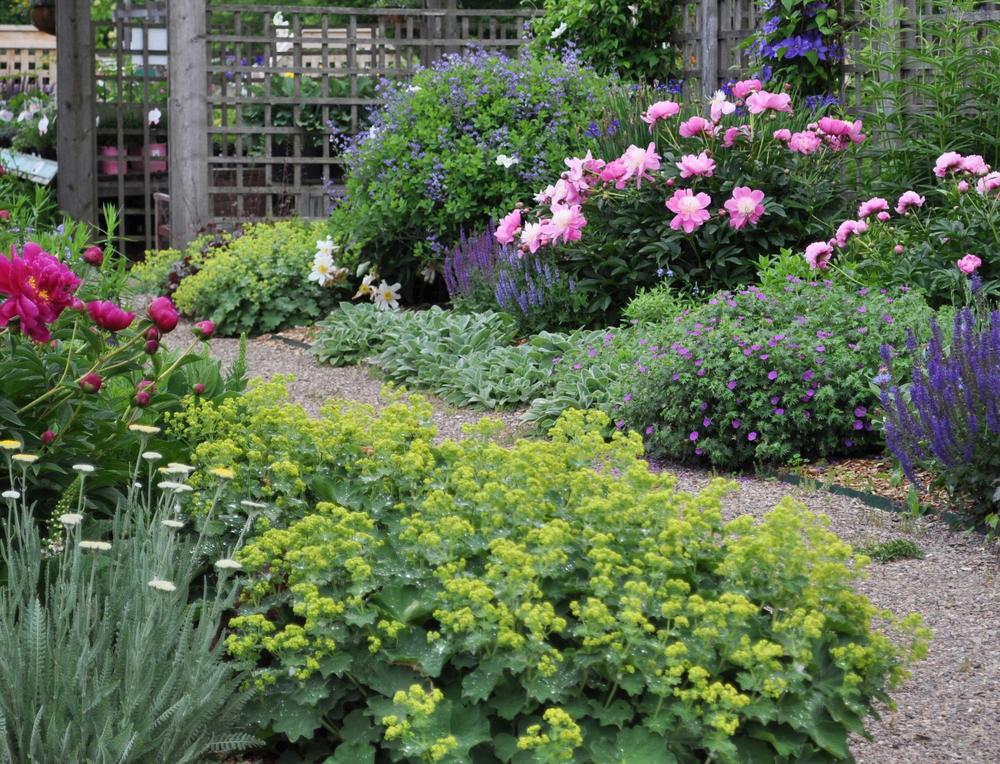From early March when the forsythia first bursts into bloom, to around mid-October when the last anemone dies back, my garden is a constantly changing flower display. I've often been asked, "How do you manage to have a garden that is always full of colorful flowers?"

Choose Plant Partners
Perennials are the backbone of any garden, but most bloom for an average of about three weeks. I supplement them with annuals, biennials, vines, bulbs, and a few flowering shrubs. Such a diverse collection inevitably includes plants of different sizes and shapes which can be tucked in and around each other, allowing you to pack a surprising number of plants into a small area.
Some of my favorite partnerships include the bold combination of pink and red shade-loving New Guinea impatiens, which take over my woodland garden in early summer after the spring bulbs are spent. They are perfectly at home with my fern collection, and each group of plants complements the other. For a sunny bed, I've planted wide swaths of bearded iris, Asiatic lilies, and daylilies together, which becomes the mid-summer highlight of my garden. As their blooms begin to fade, attention is drawn to the daisy-like flowers of my rudbeckia, which then becomes the predominant focal point.
Plant in Layers
I space plants with different bloom times very closely together. For example, I've planted early-blooming bulbs and forget-me-nots right next to iris, astilbes, and lilies, which camouflage the early-flowering plants as they begin to die back. I also repeat groupings of the same plants throughout the garden to provide a sense of harmony in the landscape. To accomplish this, I usually cluster three or six plants together to make a group, and then place these same groups in several areas around the landscape to create splashes of color everywhere.
Plant in Island Beds
I like to plant in island beds surrounded by paths or lawn. These beds are much easier to maintain than deep borders and allow me to appreciate my flowers from several vantage points within the garden. The beds are large enough to support a variety of plants, but small enough so I can easily reach everything when it's time to weed or deadhead.
Staging the Performance
Rather than planting everything that blooms at the same time in close proximity, distribute the groups of early-, mid-, and late-season bloomers around the garden. The result is flowers in all parts of the garden every month of the gardening season. They also draw the eye throughout the garden, creating the appearance of an uninterrupted expanse of color.
Now that you have some idea of what works in my garden, you can begin to create your own garden of continuous bloom.